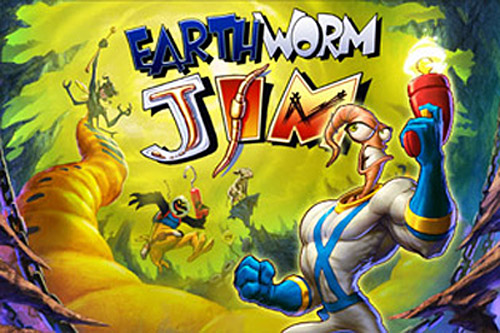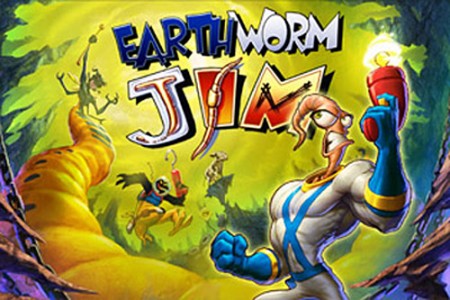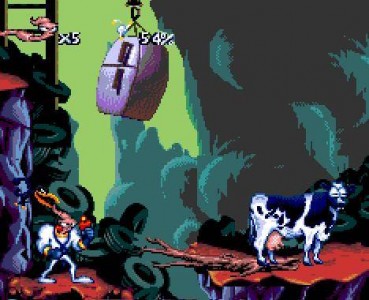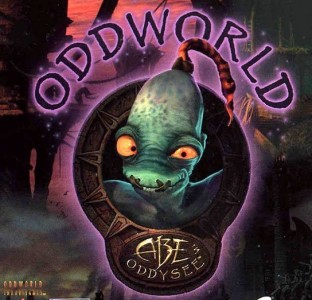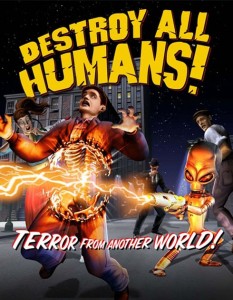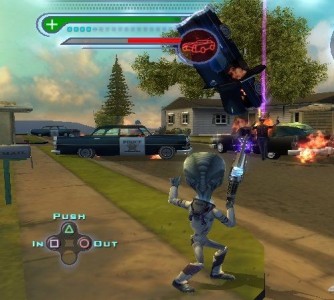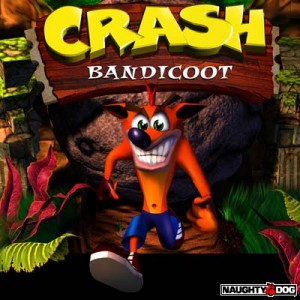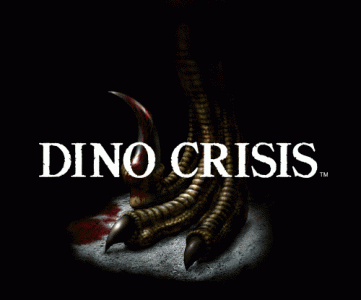Recently, many classic game franchises have been revived, after long periods out of the limelight. I don’t need to remind you of a certain Duke, who’s lack of releases in the last decade has become an industry joke. In addition, two Nintendo favourites, Donkey Kong and Kirby, have starred in new platforming games, after years of only being used to flesh out the rosters of Smash Bros and Mario Kart. And the 3DS is reviving long-dormant franchises like Star Fox and Kid Icarus. All this has started me thinking. There are games out there that I miss, and I would gladly trade the new Guitar Hero or Call of Duty for a new installment in one of these franchises.
These are just five franchises that I think need a revival. Use the comments section to discuss other series you would like to see make a comeback.
Legacy:
Earthworm Jim – Sega Genesis/Super Nintendo/PC, 1994
Earthworm Jim 2 – Sega Genesis/Super Nintendo/PC, 1995
Earthworm Jim 3D – Nintendo 64, 1999
Appearing on the Sega Genesis and the Super Nintendo in 1994, Earthworm Jim followed the well-worn path of the sidescrolling platformer. The gameplay itself wasn’t particularly innovative, but what set it apart from the pack was the game’s sense of humour. Jim was just a simple worm, with aspirations no higher than a life of eating dirt. All that changed when some kind of power suit fell out of the sky, giving him the incredible powers of bipedal movement and opposable digits. He immediately embarks on a quest to save Princess What’s-Her-Name from the evil Psy-Crow and Queen Slug-For-A-Butt.
Gameplay consisted of standard platforming and shooting, mixed with snot slinging, cow launching, puppy bouncing, and one-sided boss fights against a helpless goldfish.
It was possibly the first game that took a satirical look at the established conventions of video games. The standard video game hero needs to start as a nobody, gain powers and often must rescue a damsel in distress. So why not play as a literal worm, who gains the powers of walking and picking stuff up (extraordinary for a worm), and rescue the beautiful princess…. Um, What’s-Her-Name. It also challenged gameplay conventions, such as the boss fight. Bob the Goldfish would appear occasionally, “FIGHT!!!” would flash up – and Jim plucks Bob out of his bowl, swallows him whole, and continues. Boss Battle over.
Earthworm Jim had two sidescrolling platform games in the SNES era, and a more free-roaming platformer on the Nintendo 64. Unfortunately, the series didn’t translate to 3D very well, and Earthworm Jim 64 effectively killed the franchise. In 2008 there were rumours of an Earthworm Jim 4, but these were later declared untrue.
The original Earthworm Jim was recently ported to the iPhone, and an HD remake is also available on Xbox Live Arcade and the Playstation Network. I would definitely recommend it if you are looking for a nostalgia rush, or missed the original. Hopefully, if the remakes sell well, Jim may poke his head out of the dirt once again.
Legacy:
Abe’s Oddysee – Playstation/PC, 1997
Abe’s Exoddus – Playstation/PC, 1998
Munch’s Oddysee – Xbox, 2001
Stranger’s Wrath – Xbox, 2005
In the instruction booklet for Abe’s Oddysee, the first Oddworld game, a small paragraph outlined the studio’s plans for the franchise: There was to be an Oddworld quintology, and we were told that characters we would meet early on who seemed incidental could turn out to have an important role in the grand scheme of things. Four Oddworld games have been released, but the odd thing (sorry) about it is that only two of them are actually part of this supposed quintology. Officially, Abe’s Oddysee and Munch’s Oddysee are all that count; Abe’s Oddysee and Exoddus are intended to be a single chapter in the story, and Stranger’s Wrath is more like a diversion. So, where are the other three games we were promised? Unfortunately, Oddworld Inhabitants, the company behind the series, has abandoned its namesake and gone into film production. Unless they’re making an Oddworld film – an exciting possibility – they really should return to their original unfinished symphony.
The strength of the series was undoubtedly in their character design, with Mudokons, Scrabs and Sligs ranking among the most unique video game characters created. Every character in the franchise is quirky, funny in their own way, and just plain… odd.
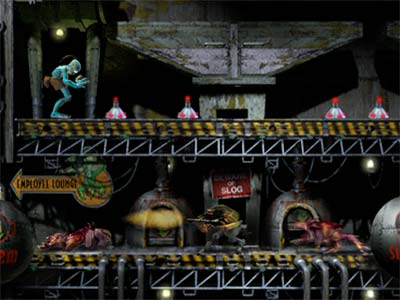 With the exception of Stranger’s Wrath, the games play as platformers, with strong puzzle elements thrown in. What makes them unique (well, apart from the characters, setting, etc) is the player’s vulnerability. It’s an established video game convention to give the player some power, and increase that power over the course of the game. Abe and Munch have very little defensive or offensive capabilities, and must rely on sneaking, hiding, and running to rescue captive Mudokons. When that isn’t enough, Abe can possess unprotected enemies, but doing so leaves his own body a sitting duck.
With the exception of Stranger’s Wrath, the games play as platformers, with strong puzzle elements thrown in. What makes them unique (well, apart from the characters, setting, etc) is the player’s vulnerability. It’s an established video game convention to give the player some power, and increase that power over the course of the game. Abe and Munch have very little defensive or offensive capabilities, and must rely on sneaking, hiding, and running to rescue captive Mudokons. When that isn’t enough, Abe can possess unprotected enemies, but doing so leaves his own body a sitting duck.
The much-touted Gamespeak gave Abe the power of speech. It may not seem like much in the current era, but at the time it was yet another distinctive tick on the Oddworld box. In the first game, it amounted to nothing much more than a few key phrases to get the captives to follow you to safety. Abe’s Exoddus expanded on the idea, by introducing moods to the mudokons you were rescuing, forcing Abe to speak to them differently. The simple “Hi”, “Follow Me” formula doesn’t work on an angry or depressed mudokon; first you would have to apologise, or cheer him up. Of course, you could always drive a depressed mudokon to suicide, or pit two angry mudokons against each other in a fight to the death, but who would do such a thing?… not me… ahem…
The promised five-game run of the Oddworld saga, snatched away from loyal gamer’s hands, will remain a holy grail throughout our gaming lives, as we play through Halo 14 or Call of Duty 19: Modern Warfare 6, out of habit more than any real enjoyment.
Thankfully, all four Oddworld games are readily available on Steam, individually or all together in the OddBoxx set. It has been recently confirmed that there’s an HD remake of Abe’s Oddysee in the works for the Playstation Network, and the rumour mill also has it the developers are working on a new entry in the series. Here’s hoping!
Legacy:
Destroy All Humans! – Playstation 2, 2005
Destroy All Humans 2 – Playstation 2, 2006
Big Willy Unleashed – Wii, 2008
Path of the Furon – Playstation 3/Xbox 360, 2009
Aliens have made first contact with mankind! Unfortunately, their intentions are not peaceful.
This describes the premise of thousands of movies, books, games, comics, and TV series. But the difference here is that the invading aliens are the protagonists. Honestly, who doesn’t want to give humanity their comeuppance and well, destroy all humans?
The furons are an alien race who has lost the ability to reproduce naturally. They have resorted to cloning to ensure the continuity of their species, but with each batch of clones the gene pool becomes a little less pure. If they keep it up, the species will begin to devolve, and so they must return to the planet they sowed with furon DNA: Earth. Humans are the carriers, and guess what? It’s harvest time!
The player takes control of Cryptosporidium 137 (or just Crypto), who lands in a small farming community in rural America in the ‘50s and attempts to make contact.
The story is quite good as it progresses through the first two games, but where the game shines is in its dialogue. The banter between Crypto and his overseer Pox is well written, sharp, usually hilarious, and sometimes disrespectful of the fourth wall. The scenarios themselves are clever variations on typical game missions. And of course, rampaging through cities on foot anal-probing humans or destroying buildings with your flying saucer never gets old.
The second game is every bit as awesome as the first, as Crypto makes his way around the rest of the world after conquering America. Unfortunately, the third and fourth games are pretty awful. Incidentally, this coincides with when Brisbane’s Pandemic Studios stopped working on the series. The later games lack the polish and fun factor of their Pandemic-helmed predecessors, and the fourth, Path of the Furon, was rushed to release. As a result, it’s a buggy mess of misfiring trigger boxes, out of sync dialogue, and spastic physics. Interestingly, the only thing that remained true to the series was the humour: the dialogue and story remain as entertaining as ever, if you can tolerate bland environments and unpredictable physics.
It seems two terrible titles are enough to destroy all future prospects of a once-fantastic franchise. Hopefully, this isn’t the final curtain on Crypto and Pox. Preserving the writing style and voice actors, while introducing a more dynamic destruction system, like those in Just Cause 2 or Red Faction: Guerrilla, could save this series from the autopsy table in Area 51.
Legacy:
Crash Bandicoot – Playstation, 1996
Cortex Strikes Back – Playstation, 1997
Crash Bandicoot: Warped – Playstation, 1998
Crash of the Titans – Wii/Xbox 360, 2007
Crash: Mind Over Mutant – Wii/Xbox 360, 2008
Plus numerous racing/party games
Crash Bandicoot first presented his strange depiction of Australian wildlife to an already clueless American audience in 1996. The first three games, released onto the Playstation, played as classic platformers. In a way, they were what Mario might have become had he stuck to the linear path from his 2D days. But while Mario was busy pioneering open-environment platformers, Crash stepped in to show us that linear platforming could still be fun in a 3D space. The games’ levels would transition seamlessly between running along the z-axis with the camera behind the character, to the classic sidescrolling view, and back. Some levels had you running towards the camera, with a boulder or giant polar bear in pursuit.
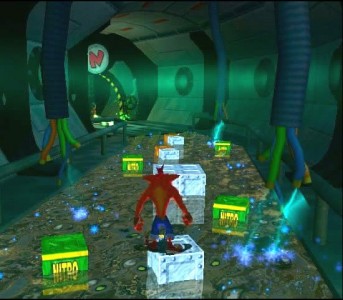 The gameplay relied on finding the flow of the level, that intuition that tells you exactly when to jump and duck, and it became almost zen to run through the game. That sweet sensation of flow is something that is all but lost in open-world platformers; wrestling with a disobedient camera can shatter that in a second. They also become more about finding the path – there’s no question about which way to go in a linear platformer, so the challenge arises from overcoming obstacles in that path.
The gameplay relied on finding the flow of the level, that intuition that tells you exactly when to jump and duck, and it became almost zen to run through the game. That sweet sensation of flow is something that is all but lost in open-world platformers; wrestling with a disobedient camera can shatter that in a second. They also become more about finding the path – there’s no question about which way to go in a linear platformer, so the challenge arises from overcoming obstacles in that path.
This is not to mention the series’ bizarre characters and environments, which definitely add to the charm. Yes, you play as a mutant bandicoot. Yes, you were created by a middle-aged, childish, tantrum-throwing, mad scientist. And yes, you face off against a beefcake tiger, a guy with a rocket lodged in his skull, and a half-dingo, half-crocodile creature who acts like an offensive Australian stereotype.
The series eventually changed its focus, which is what a good franchise must do if it is to survive long-term. The Wrath of Cortex, on the Xbox and Playstation 2 was the last traditional Crash platformer. Twinsanity shook things up a little, by allowing players a little more freedom to wander off the track, and included some very interesting levels, like playing as Crash and Cortex involved in a brawl, rolling down a hill. Since then, the characters have been in a slew of party and kart-racing games, and Crash’s only exploits on the current gen consoles are those terrible mutant games, which have turned him into a fairly dull beat-em-up game.
So yes, I know. Crash Bandicoot is still around now. But not in the form I crave. I want another classic platformer, the likes of the original trilogy on the Playstation. Those games are available for download on the Playstation Network.
Legacy:
Dino Crisis – Playstation, 1999
Dino Crisis 2 – Playstation, 2000
Dino Crisis 3 – Xbox, 2003
This is one you probably wouldn’t expect to see on a list like this. But yes, I loved the first two games in this series, and I want another one.
As a fan of Resident Evil (or at least what it started as, before becoming a standard action/shooter series), I got into Dino Crisis straight away. It played just like the survival horror of wandering that mansion, freaking out about a single zombie in a corridor. But with dinosaurs! No more shambling, easy-to-avoid corpses, these things stalked you from room to room and slaughtered you!
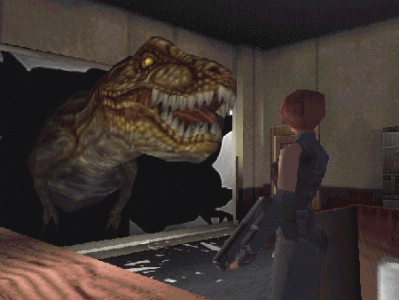 I know it’s a bit slow for some people, but I love wandering around a building, looking for keys and corresponding doors, and fending off the occasional attack. Resident Evil evolved, trading survival horror for the more action-based gameplay of RE4 and 5. But Dino Crisis had survival horror. It had creepy environments, and plenty of tense downtime. And dinosaurs are a more active threat than zombies, as they chase you down, pick you up in their mouths, throw you around like a ragdoll. There’s no running circles around them.
I know it’s a bit slow for some people, but I love wandering around a building, looking for keys and corresponding doors, and fending off the occasional attack. Resident Evil evolved, trading survival horror for the more action-based gameplay of RE4 and 5. But Dino Crisis had survival horror. It had creepy environments, and plenty of tense downtime. And dinosaurs are a more active threat than zombies, as they chase you down, pick you up in their mouths, throw you around like a ragdoll. There’s no running circles around them.
In many games, the enemies deal damage by performing their “attack” animation next to the player character, while they perform a “hit” animation in response. There is little actual contact or believability in that. Enemies in Dino Crisis interacted with the player, and it was that dynamic interactivity that I loved. Particularly in the second game, the dinos would grab you and shake you around a bit, throw you everywhere, or pin you down. It made you feel vulnerable, made you dread each encounter, and that is crucial in a survival horror game.
Unfortunately, the third game, released for Xbox in 2003, pretty much killed the franchise. Somehow transporting the dinosaur-fighting to a space station, the game became an unpolished third-person shooter. According to the developers, there have been talks of rebooting the series, keeping to the Resident Evil-esque gameplay that made the first two so popular, but it looks as though this franchise has gone the way of the dinosaurs.


